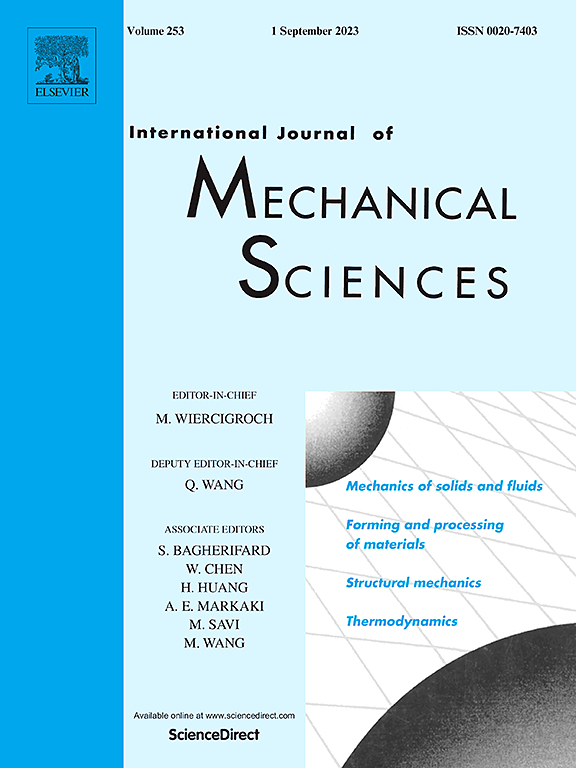Ultrasonic assisted grinding mechanisms of SiCf/SiC composites driven by strain-rate
IF 7.1
1区 工程技术
Q1 ENGINEERING, MECHANICAL
International Journal of Mechanical Sciences
Pub Date : 2025-02-01
DOI:10.1016/j.ijmecsci.2025.109926
引用次数: 0
Abstract
Ultrasonic assisted grinding (UAG) is considered an effective method for machining ceramic matrix composites (CMCs). However, the intense dynamic mechanical loads encountered during machining, along with the property disparities among fiber, matrix, and interface, increase both the uncertainty of UAG process and the difficulty in analyzing the material removal mechanism. In this study, the mechanisms underlying ultrasonic vibration were revealed via dynamic mechanical response of SiCf/SiC composites and energy dissipation principles during machining for the first time. Through experiments with conventional grinding (CG) and UAG, it is discovered that UAG exhibits superior machining performance compared to CG, with reduced surface/subsurface damage, lower grinding forces, and decreased surface roughness. Moreover, UAG effectively minimizes discrepancies among different fiber orientations. Combining the results of dynamic mechanical response and energy dissipation model for chip fragment formation, it is found that the high strain rate induced by ultrasonic vibration promotes the embrittlement of composites. This is manifested by the increased nucleation of microcracks in both fibers and matrix, which inhibit the propagation of interfacial cracks and long cracks. Consequently, the removal modes of fibers, initially through bending or shear fracture, and matrix, initially through breakage, both transition to a pulverization mode. These transitions weaken the interfacial, heterogeneous, and anisotropic effects during machining, thereby achieving high-quality processing of SiCf/SiC composites. This study enhances the understanding of surface formation and material removal mechanisms. Moreover, it confirms the feasibility of using dynamic mechanical response and energy dissipation principles to investigate material removal mechanisms in the machining of CMCs.

求助全文
约1分钟内获得全文
求助全文
来源期刊

International Journal of Mechanical Sciences
工程技术-工程:机械
CiteScore
12.80
自引率
17.80%
发文量
769
审稿时长
19 days
期刊介绍:
The International Journal of Mechanical Sciences (IJMS) serves as a global platform for the publication and dissemination of original research that contributes to a deeper scientific understanding of the fundamental disciplines within mechanical, civil, and material engineering.
The primary focus of IJMS is to showcase innovative and ground-breaking work that utilizes analytical and computational modeling techniques, such as Finite Element Method (FEM), Boundary Element Method (BEM), and mesh-free methods, among others. These modeling methods are applied to diverse fields including rigid-body mechanics (e.g., dynamics, vibration, stability), structural mechanics, metal forming, advanced materials (e.g., metals, composites, cellular, smart) behavior and applications, impact mechanics, strain localization, and other nonlinear effects (e.g., large deflections, plasticity, fracture).
Additionally, IJMS covers the realms of fluid mechanics (both external and internal flows), tribology, thermodynamics, and materials processing. These subjects collectively form the core of the journal's content.
In summary, IJMS provides a prestigious platform for researchers to present their original contributions, shedding light on analytical and computational modeling methods in various areas of mechanical engineering, as well as exploring the behavior and application of advanced materials, fluid mechanics, thermodynamics, and materials processing.
 求助内容:
求助内容: 应助结果提醒方式:
应助结果提醒方式:


